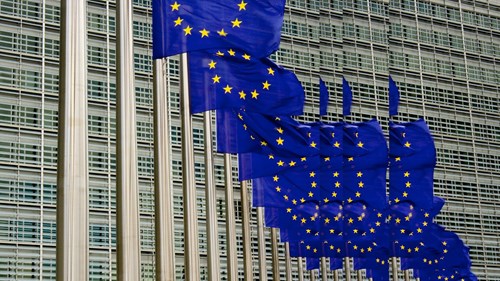European Commission sheds light on how to deal with new merger referral policy
The European Commission (“EC”) has recently published a Q&A document providing practical information on the implementation of its Guidance Communication (2021) regarding the application of the referral mechanism set out in Article 22 of the European Merger Regulation (“EUMR”). This Q&A provides more clarity on the assessment of candidate cases for referral, interaction with the Commission and its cooperation with National Competition Authorities (“NCAs”).
I. Background
Under Article 22 of the EUMR, a Member State may refer a transaction to the EC that meets two requirements: it must (i) affect trade between Member States and (ii) threaten to significantly affect competition within the territory of the referring Member State(s).
Originally, the referral mechanism of Article 22 of the EUMR was intended to allow Member States that had no national merger control regime to bring transactions perceived as problematic to the attention of the EC. Over time, Article 22 EUMR lost its relevance, as all Member States except Luxembourg adopted a merger control regime. Then the EC discouraged requests for referral of transactions that had not triggered the referring Member States’ competence to review transactions under their own merger control regimes.
In March 2021, however, the EC reversed this policy and laid out its new approach in its Guidance Communication (2021). The EC now actively encourages NCAs to refer certain transactions that have not exceeded the Member States’ jurisdictional thresholds. The background of this policy change lies in the (perceived) enforcement gap when it comes to certain mergers, particularly in the digital and pharmaceutical areas. Where takeovers of highly innovative companies do not trigger national filing thresholds (because the companies are too small), the elimination of their competitive potential is not scrutinized at all. In addition, the new law governing large digital platforms (DMA – Digital Markets Act) requires gatekeepers to inform the EC about relevant transactions. Such information can then be used by the EC to encourage Member States to refer the transactions to the EC for merger control assessment.
While the German Federal Cartel Office and some other NCAs have expressed concerns about the new mechanism and refrained from referring cases where jurisdictional thresholds of national merger control regulations are not met, the General Court has not objected to the EC’s new policy (but the Illumina/GRAIL case is currently pending at the European Court of Justice). In the meantime, the EC has accepted Article 22 referral requests in at least four cases (Illumina/GRAIL, Meta/Kustomer, Viasat/Inmarsat and Cochlear/Oticon Medical).
II. The new Q&A document
The 2021 policy has led to some uncertainty regarding deal planning, as it deviates from the established reliance on more clear-cut jurisdictional thresholds, which facilitated an accurate assessment as to whether or not a deal is notifiable.
In its new Q&A document, the EC now sheds more light on the practical implementation of its new policy.
1. How to assess the risk of an Article 22 referral
Generally, Article 22 referrals are not limited to any specific economic sector. However, the EC is focusing on the digital and health (pharma, biotech and medical devices) sectors. All examples from the Q&A document have in common that the target’s turnover does not adequately reflect its actual or future competitive potential, as may be indicated by a comparatively high transaction value for a target with low or no turnover.
The EC is also interested in reviewing and preventing “killer acquisitions”. These are transactions among competitors in which the target is either growing quickly or on the verge of a breakthrough, potentially threatening the incumbent’s business model. Vertical mergers where the target has the potential for very valuable input into the incumbent’s business model have also caught the EC’s attention.
The EC will consider refusing a referral request where the transaction has already been notified in Member States that did not request or join another referral request.
2. How to seek guidance from the EC as a merging party
The merging parties may contact NCAs directly, but the EC has voiced a preference for the parties’ contacting the EC by submitting a “case team allocation request” (a standard document form which seeks general information on the parties, the products, the degree of competition between the merging parties, etc.). This is because the EC considers itself a better-placed authority to give guidance.
The EC would then require substantiated information about the deal in an informal briefing paper. The information includes a concise description of the parties and the transaction, but also a more detailed assessment of the relevant markets and the competitive situation (an indicative list is provided on p. 6 of the Q&A).
“Early indications” given by the EC that an intended transaction does not constitute a good candidate for a referral are non-binding, and there is no legal timeframe for the assessment. However, the EC will endeavour to carry out a first review within five working days from receipt. It is worth noting that Member States must request a referral within, at most, 15 working days from the date on which the concentration was “made known” (i.e. the active transmission of sufficient information to enable a preliminary assessment) to them. Until a referral request is made, the merging parties are not obliged to refrain from the implementation of their transaction. However, this does not mean intervention at a later stage would be off the table.
3. How to report a suitable case to the EC as a third party
Third parties may inform the EC of suitable candidates for referral by informally contacting the Head of Unit of the merger unit in charge of the relevant industry. The EC is not obliged to act, but it will acknowledge receipt and, if it considers the criteria for a referral to be met, invite the relevant Member States to request a referral within a reasonable period of time.
4. How cooperation between the EC and the NCAs takes place
Member States have the right – and not the obligation – to request a referral. The EC can only invite them to make such a request. We consider it very likely that Member States that have not expressed concerns regarding the referral policy will follow such request. The Q&A confirms that all information submitted to the EC will be kept confidential. However, the EC encourages applicants to indicate when submitting a case allocation request whether the transaction in itself is highly market sensitive and expects them to provide a waiver regarding the exchange of information with the NCAs.
III. Take-aways
The new referral mechanism gives the EC expansive leeway in assessing candidate cases. This leeway is not fully mitigated by the option of seeking guidance. The good news, however, is that the case numbers indicate that the EC will apply a cautious approach to Article 22. The most difficult cases are those where the transactions do not meet any of the EU Member States’ merger thresholds and are thus ready to close. We understand that until mid-December 2022, the EC had considered for referral 30 such cases in which no national merger thresholds were met, Illumina/GRAIL being the only one that has actually been referred. Apart from this, there have been only a few referrals (such as the three other cases mentioned above), but in these, at least the national thresholds were met.
Overall, merger control planning requires a further risk assessment as to where it is appropriate to seek guidance from the EC or at least an NCA to increase legal certainty. This needs to be considered at an early phase of the transaction planning, as it can have a significant impact on the transaction timetable.
Well
informed
Subscribe to our newsletter now to stay up to date on the latest developments.
Subscribe now










